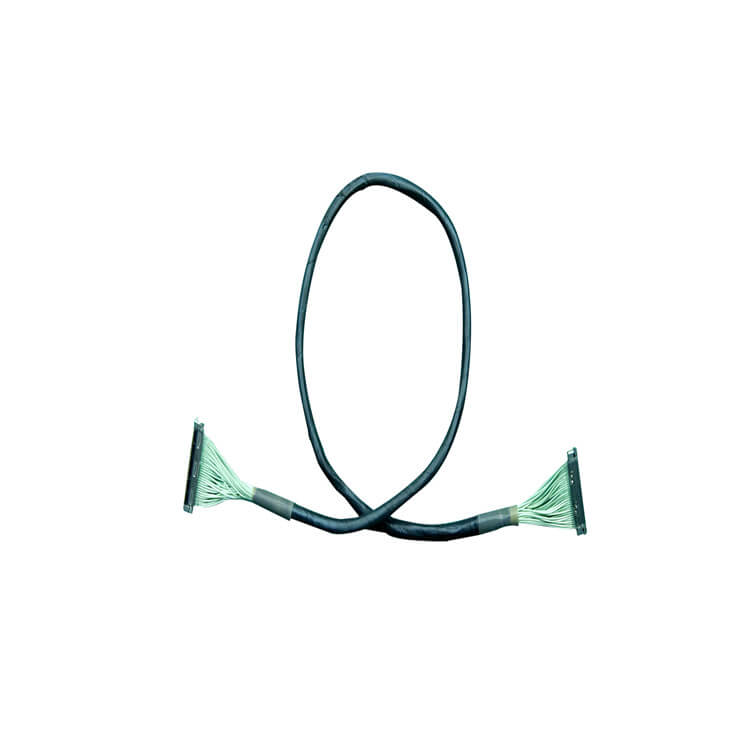Abstract
Coaxial cables are a cornerstone of modern communication systems, but their design and functionality differ significantly from other cable types such as twisted-pair, fiber-optic, and ribbon cables.
1.Introduction
Cables serve as the lifeline for transmitting data, power, and signals across industries. Among them, coaxial cables stand out for their unique architecture tailored for high-frequency applications. However, understanding how they differ from other cables—such as twisted-pair, fiber-optic, and others—is critical for selecting the optimal solution for specific needs.
2.Structural Differences
2.1 Coaxial Cable
Layered Design:
Central conductor (solid or stranded copper).
Dielectric insulator (foam PE, PTFE, or air-spaced).
Metallic shield (braided copper or aluminum foil).
Outer jacket (PVC, LSZH).
Key Feature: Concentric layers ensure electromagnetic shielding and signal integrity.
2.2 Twisted-Pair Cables
Design: Pairs of insulated copper wires twisted together.
Unshielded (UTP): No metallic shielding; relies on twisting to reduce interference.
Shielded (STP): Additional foil or braid shielding.
Key Feature: Twisting minimizes crosstalk but offers limited high-frequency performance.
2.3 Fiber-Optic Cables
Design: Glass or plastic core surrounded by cladding and protective layers.
Key Feature: Transmits light pulses instead of electrical signals; immune to EMI.
2.4 Ribbon Cables
Design: Flat, parallel insulated conductors.
Key Feature: Compact and ideal for internal device connections (e.g., PCBs).

3.Signal Transmission Mechanisms
3.1 Coaxial Cables
Electrical Signals: Transmit analog or digital signals via the central conductor.
Shielding: Outer metallic layer blocks external EMI and contains signals within the cable.
Impedance: Standardized values (e.g., 50Ω for RF, 75Ω for video) ensure signal matching.
3.2 Twisted-Pair Cables
Balanced Transmission: Twisting cancels electromagnetic interference inductively.
Frequency Limit: Effective up to ~500 MHz (Cat 6A) but suffers attenuation at higher frequencies.
3.3 Fiber-Optic Cables
Optical Transmission: Light pulses travel through the core with minimal loss.
Bandwidth: Supports terabits per second over long distances (>100 km).
3.4 Ribbon Cables
Low-Frequency Use: Primarily for low-speed data/power transfer within devices.
4.Performance Comparison
Parameter Coaxial Twisted-Pair Fiber-Optic Ribbon
Bandwidth Up to 10+ GHz Up to 500 MHz THz range <100 MHz Attenuation Moderate (dB/m) High at high frequencies Very Low High EMI Resistance Excellent Moderate (STP > UTP) Immune Poor
Max Distance 100–500 m 100 m (Ethernet) 100+ km <1 m
Cost Moderate Low High Very Low
5.Applications
5.1 Coaxial Cables
Broadcasting: Cable TV, satellite signal distribution.
RF Systems: Antennas, radar, and wireless infrastructure.
Medical Imaging: MRI machines and diagnostic equipment.
5.2 Twisted-Pair Cables
Networking: Ethernet (Cat 5e/6/7).
Telephony: Traditional telephone lines.
5.3 Fiber-Optic Cables
Telecom: Long-haul internet backbone, submarine cables.
Data Centers: High-speed server interconnects.
5.4 Ribbon Cables
Electronics: Internal connections in computers, printers, and industrial controllers.
6.Advantages and Limitations
Coaxial Cables
Pros: High EMI shielding, wide bandwidth, durable.
Cons: Bulkier, higher cost than UTP.
Twisted-Pair
Pros: Cost-effective, flexible, easy to install.
Cons: Limited high-frequency performance, susceptible to noise.
Fiber-Optic
Pros: Ultra-high speed, long-distance, no EMI.
Cons: Fragile, complex termination, expensive.
Ribbon Cables
Pros: Space-efficient, low-cost.
Cons: Limited to short-distance, low-speed use.
7.Future Trends
Hybrid Solutions: Coaxial cables integrated with fiber for hybrid RF/optical systems.
Material Advances: Lighter, flexible coaxial designs for 5G and IoT.
Our factory offers high-quality products at competitive prices
Micro Coaxial Cable: High-Quality Solutions for Precision Applications Micro coaxial cables are essential components in high-performance electronic applications, providing reliable signal transmission in compact and flexible designs. A.
Meta Description: Discover our premium Flexible Micro-Coaxial Assemblies—engineered for high-frequency signal integrity, durability, and versatility in aerospace, medical, telecom, and robotics applications. What Are Flexible .
Feel free to reach out to us for any inquiries or orders.